Logos President Keynotes Air Force Worldwide Public Affairs Conference
Logos Consulting Group is pleased to announce the Logos President Helio Fred Garcia was a keynote speaker at the U.S. Air Force Worldwide Public Affairs Conference in Washington, DC on December 6, 2016.
The conference, last held five years ago, is an opportunity for about 300 of the 5,500 U.S. Air Force public affairs officers to hear from commanders about priorities, learn and share best practices, and attend workshops on specific skills.
The four-day conference included presentations from a range of military and civilian speakers.

The first speaker was the commanding general of Air Force Public Affairs, Brigadier General Ed Thomas. General Thomas is a career public affairs officer and inspiring leader, who laid out for his group his and the Air Force’s priorities for shaping the image and reputation of the Air Force both in the U.S. and abroad.
The second speaker was the Secretary of the Air Force, the Honorable Deborah Lee James. She described some of the challenges the Air Force will face in the future, and the importance of public affairs in building public support for the service, for weapon systems, and for United States in general.

The final speaker of the morning was Logos president Helio Fred Garcia. He worked the 300 participants through a structured review of ways to maintain trust in a crisis, first by asking the right questions, and then by meeting stakeholders’ expectations.
Some excerpts from Garcia’s session:
“The word from which the English word Crisis derives is ΚΡΙΣΙΣ, which in Ancient Greek meant a choice at a moment when one’s destiny can be determined one way or another.
So it’s important to think of crisis management as the management of choices at a moment when an organization’s destiny can go one way or another.
And the decision criteria — the basis for choice — matter. Most communicators in a crisis use the wrong criteria because they ask the wrong question. The wrong question is “what should we do?” Even worse, “what should we say?” The reason both questions are wrong is that they put the questioner in a self-referential frame. As a result, many of the proposed solutions are actions that may make the person in crisis feel good, but are unlikely to maintain or build trust. Rather, they are likely to cause trust to fall.
Trust is the consequence of expectations fulfilled. Trust arises when there are no unrealized expectations. So the right question in a crisis is What would reasonable people appropriately expect a responsible organization to do?”
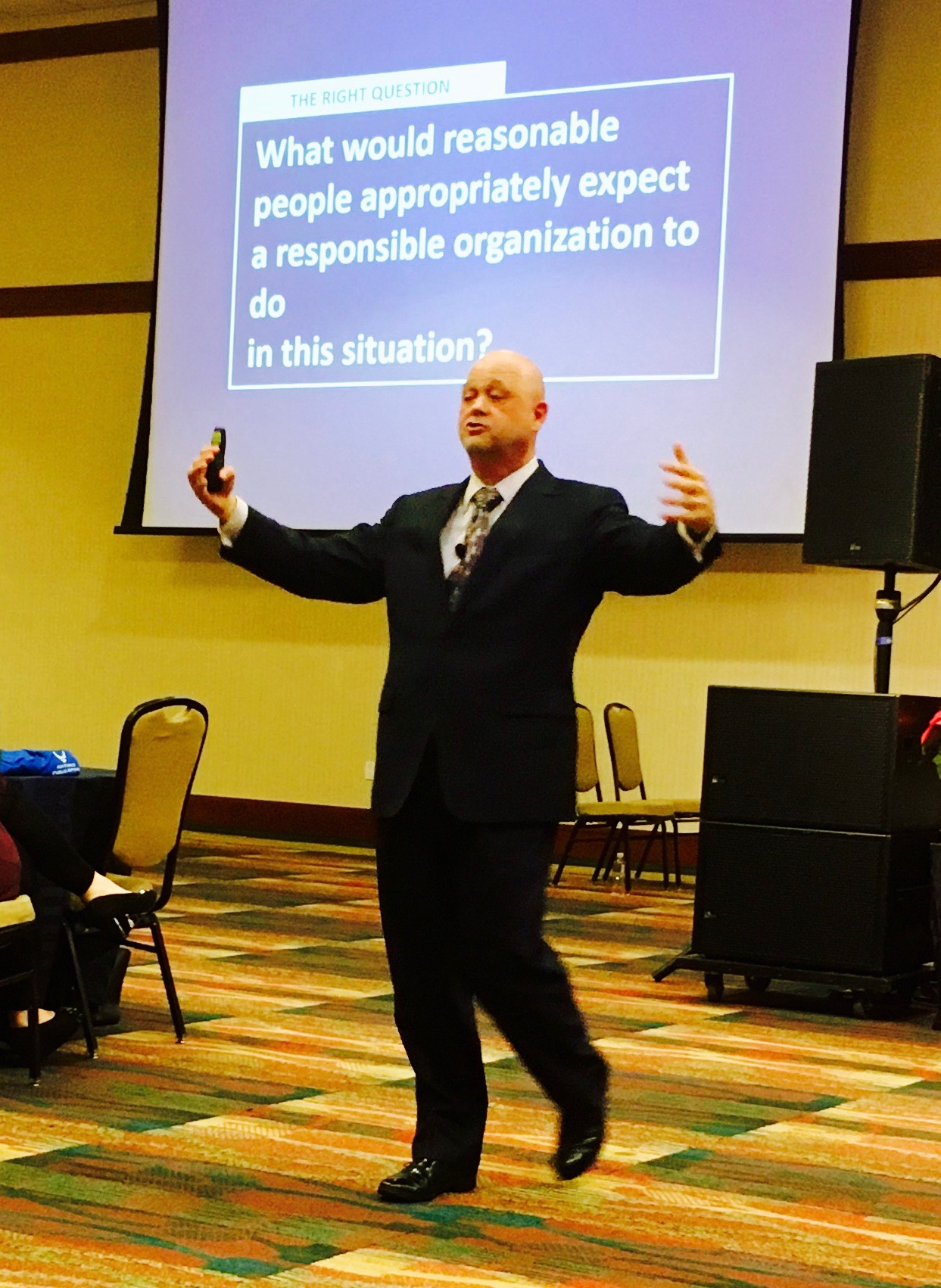
Garcia then applied that decision criteria to a range of civilian and military case studies, drawing the audience into a robust discussion.
And whatever the particular answer to the question of what reasonable people would appropriately expect a responsible organization to do, the common expectation is that the organization care. Care that there is something that requires attention; care that people have been affected and may be at risk; and care about the people affected.
So the strategy for effective crisis response is the following:
- A timely demonstration that we care
- And a persistent demonstration that we continue to care
- For as long as that expectation is alive.
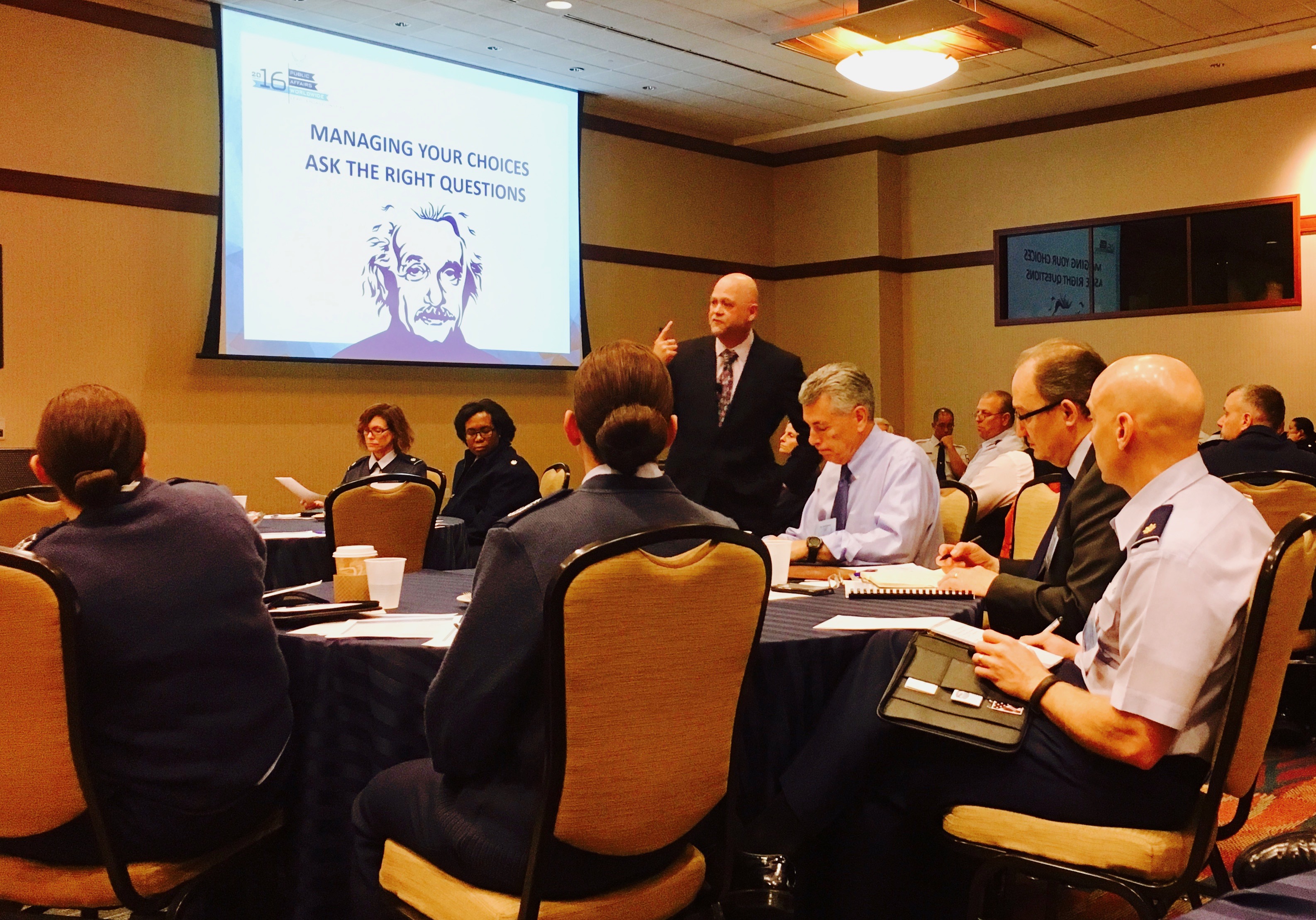
In grappling with the case studies the participants tested their own ability to consistently apply the decision criteria to a range of challenges they face in their own work.
After presenting for ninety minutes, Garcia’s presentation was followed by General Thomas’ affirmation of the principles for the work of Air Force public affairs, and encouraged all Air Force public affairs staff to embrace the approach to ask the right questions to maintain trust.
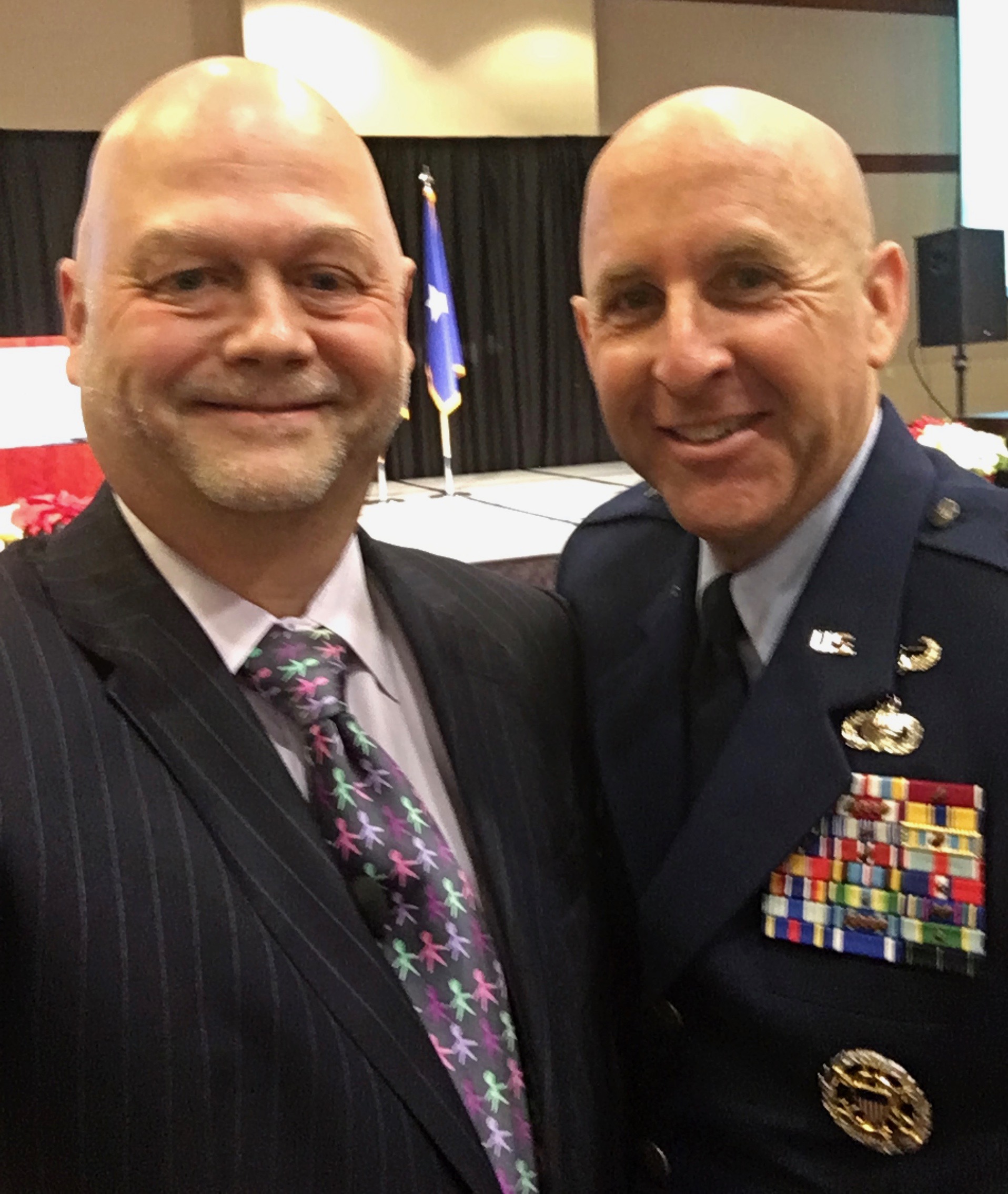
With Brigadier General Ed Thomas, Director of Public Affairs, U.S. Air Force
Garcia has been advising elements of the U.S. military for more than 25 years. His primary military client is the U.S. Marine Corps, but over the years he has also worked with all branches of the U.S. armed forces through various joint commands. He is also a contract teacher at the U.S. Defense Information School, in Fort Meade, Maryland, where, among other branches, he teaches Air Force Public Affairs officers.
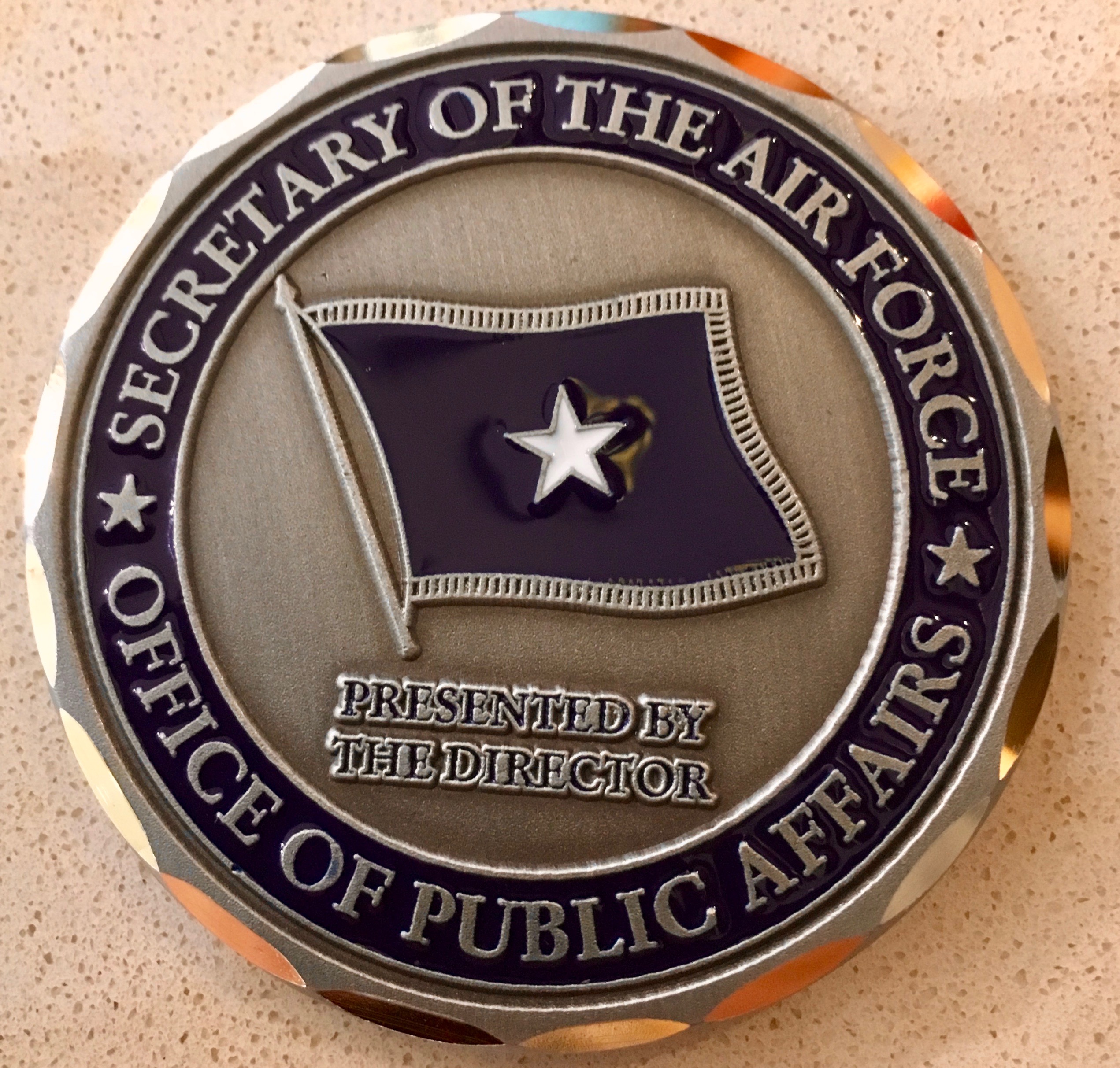
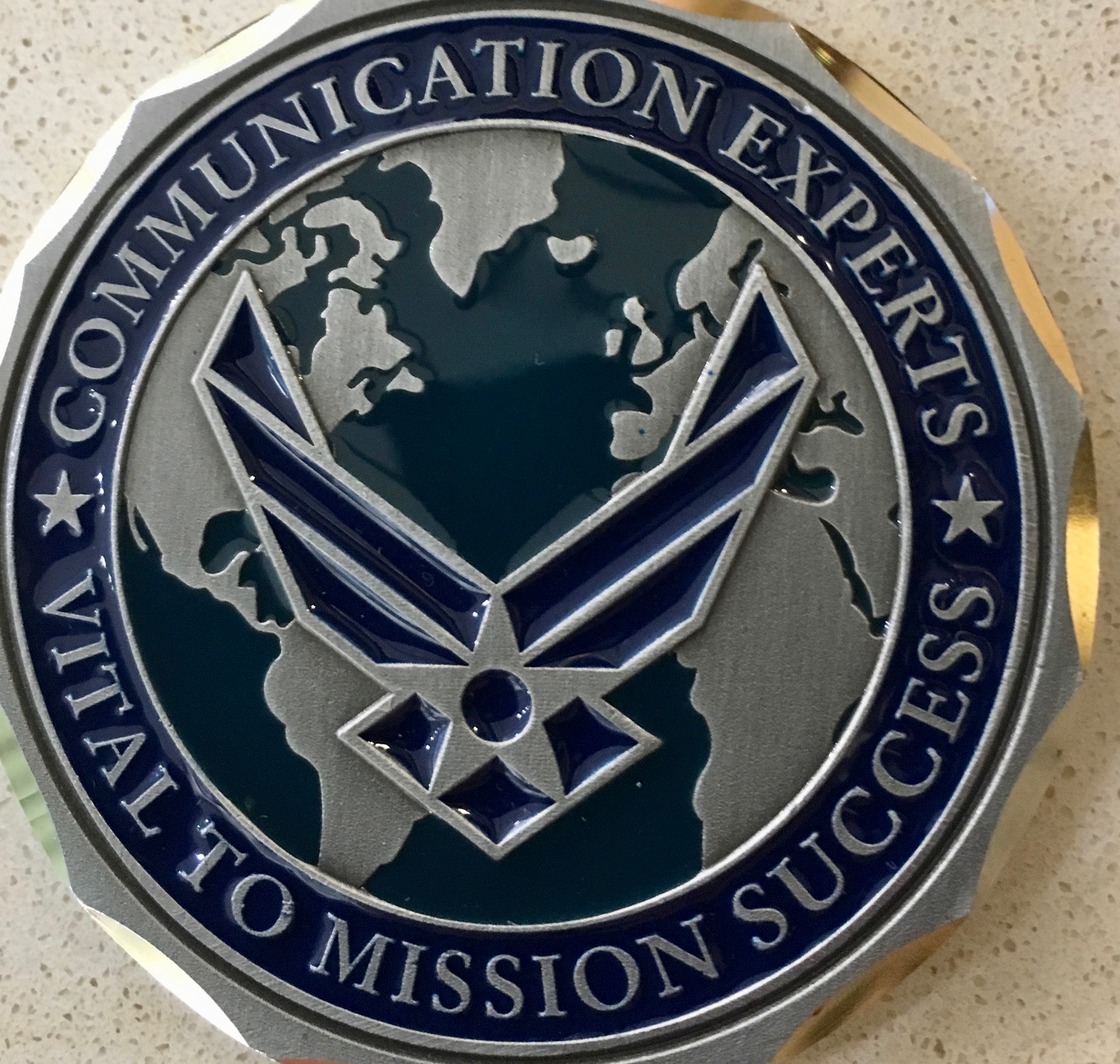

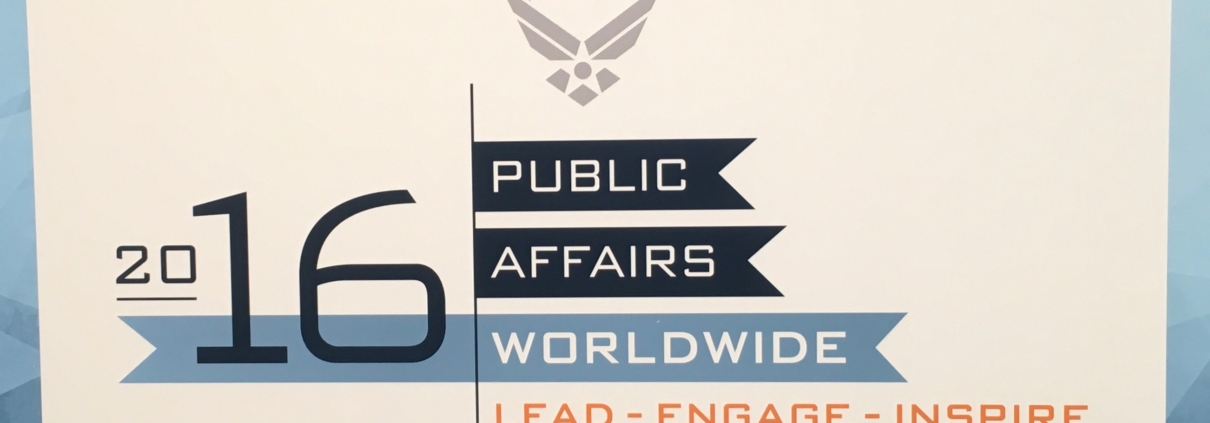

Leave a Reply
Want to join the discussion?Feel free to contribute!